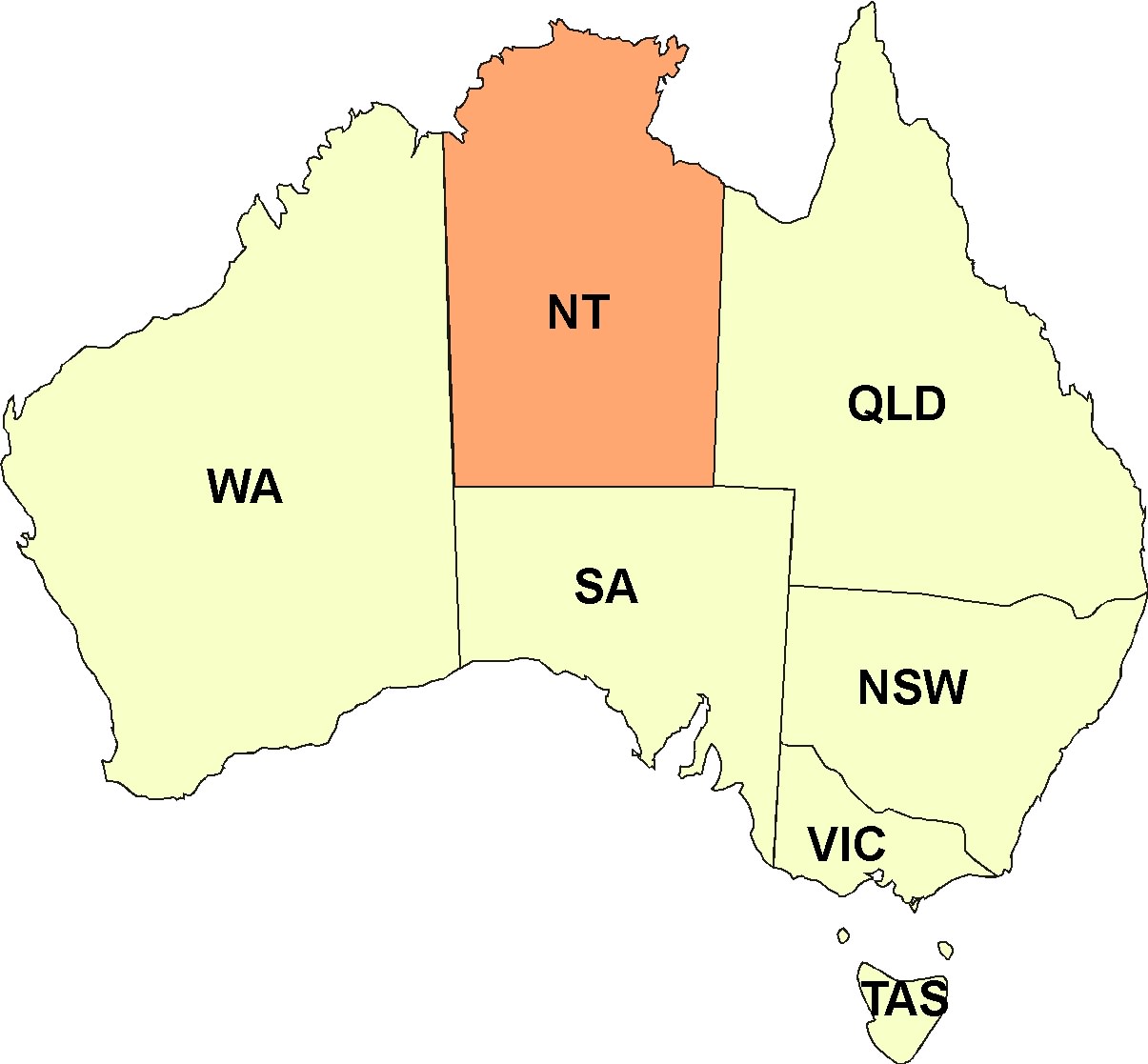Northern Territory, Australia 
Mangroves in the Northern Territory represent 42% of Australia’s mangrove communities. They vary from species rich in the highly seasonal rainfall areas of the Tiwi Islands, north-east Arnhem Land and Kakadu, to species poor in the seasonally arid mangrove areas in the Gulf of Carpentaria and Joseph Bonaparte Gulf. Species numbers decrease with increasing latitude to the south. However, a notable pattern in Northern Territory mangroves is the increase in species numbers in areas of higher rainfall.
For more species details see the 2006 book Or, check out the MangroveWatch apps!
Active Local Groups with MangroveWatch Training
Northern Territory MangroveWatch groups include:
- Western Gulf of Carpentaria – Numbulwar & Ngukurr Rangers
- South Western Gulf of Carpentaria – Borroloola Rangers
If you are interested in starting a group fill out the form below:
2018 List of Mangrove Plant Species in the Northern Territory
– their presence noted for 3 catchment regions (see Map above)
- Acanthus ebracteatus subsp. ebarbatus – BO, TE, WG
- Acanthus ilicifolius – BO, TE, WG
- Acrostichum speciosum – TE, WG
- Aegialitis annulata – BO, TE, WG
- Aegiceras corniculatum – BO, TE, WG
- Avicennia integra – TE
- Avicennia marina var. eucalyptifolia – BO, TE, WG
- Bruguiera exaristata – BO, TE, WG
- Bruguiera gymnorhiza -TE, WG
- Bruguiera parviflora – BO, TE, WG
- Bruguiera sexangula – TE
- Camptostemon schultzii – BO, TE, WG
- Ceriops australis – BO, TE, WG
- Ceriops pseudodecandra – TE
- Ceriops tagal – TE
- Cynometra iripa -TE, WG
- Diospyros littorea – BO, TE, WG
- Excoecaria agallocha var. agallocha – TE, WG
- Excoecaria agallocha var. ovalis – BO, TE, WG
- Lumnitzera littorea -TE, WG
- Lumnitzera racemosa – BO, TE, WG
- Nypa fruticans – TE
- Osbornia octodonta – BO, TE, WG
- Pemphis acidula – WG
- Rhizophora apiculata – TE
- Rhizophora lamarckii – TE
- Rhizophora stylosa – BO, TE, WG
- Scyphiphora hydrophylacea -TE, WG
- Sonneratia alba – BO, TE
- Sonneratia lanceolata – TE
- Sonneratia urama – TE
- Xylocarpus granatum – TE
- Xylocarpus moluccensis – BO, TE, WG
You can find out more detail about these species from our book and smart device apps
More Information
 Coastal areas are generally characterised by monsoonal climates that have uniformly high temperatures and highly seasonal rainfall. The dry season from April to November is the dominant feature of the climate, with 95% of river flow occurring in the wet from December to March. Tidal ranges vary from over eight metres in Darwin Harbour and the west coast, to around two metres in parts of the Gulf of Carpentaria. A feature of many coastal areas is the large macrotidal rivers that drain low relief coastal landforms. Mangroves also penetrate up to 100 km inland because of the greater influences of tide and salinity from larger tidal amplitude assisted by the low relief landforms and seasonal rainfall. Most of the coastline is affected by low wave energy, supporting mangrove grow to reportedly occupy 42% of the 10,953 km coastline.
Coastal areas are generally characterised by monsoonal climates that have uniformly high temperatures and highly seasonal rainfall. The dry season from April to November is the dominant feature of the climate, with 95% of river flow occurring in the wet from December to March. Tidal ranges vary from over eight metres in Darwin Harbour and the west coast, to around two metres in parts of the Gulf of Carpentaria. A feature of many coastal areas is the large macrotidal rivers that drain low relief coastal landforms. Mangroves also penetrate up to 100 km inland because of the greater influences of tide and salinity from larger tidal amplitude assisted by the low relief landforms and seasonal rainfall. Most of the coastline is affected by low wave energy, supporting mangrove grow to reportedly occupy 42% of the 10,953 km coastline.
Contact: mangrovewatch@gmail.com


